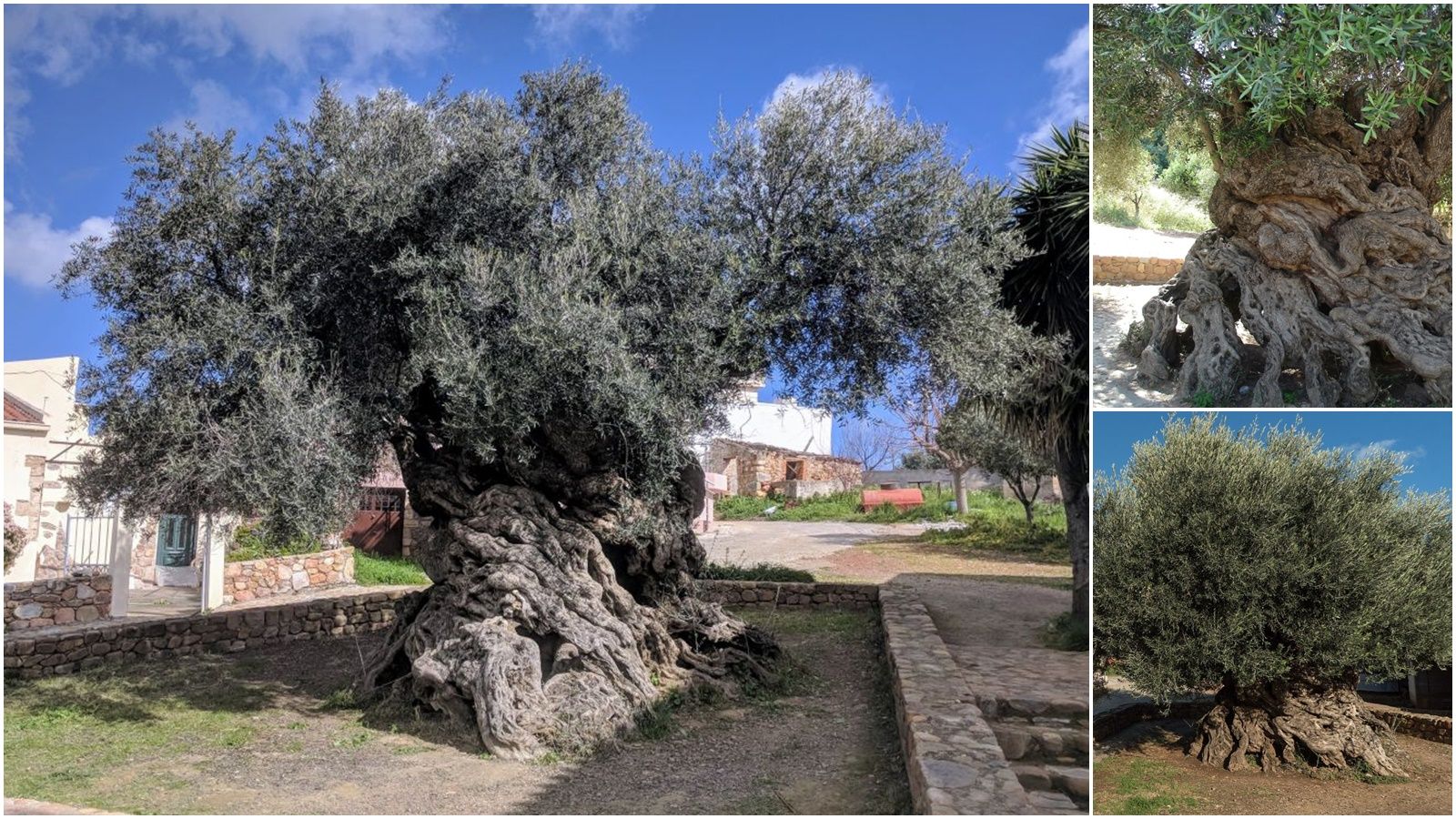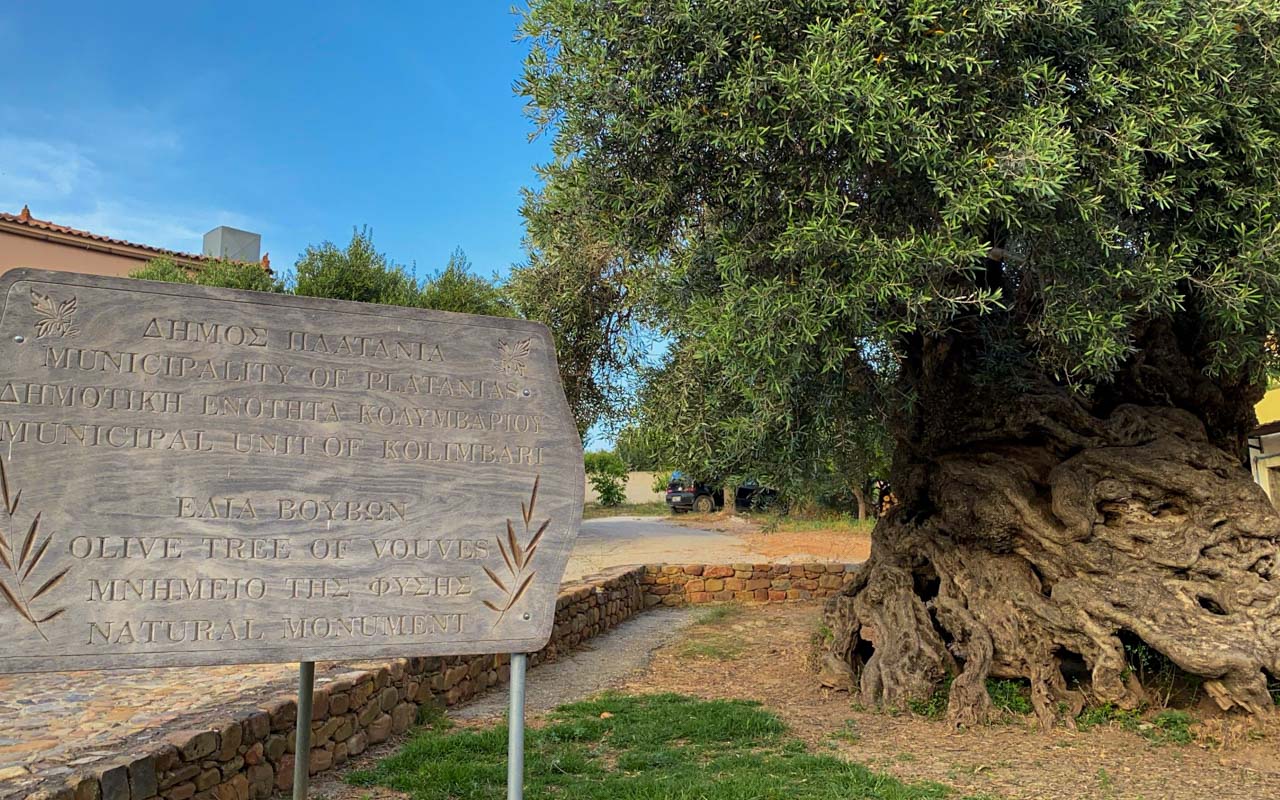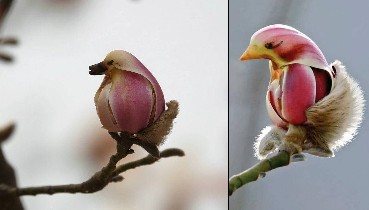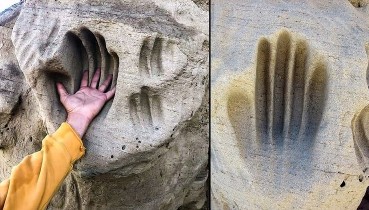

The World’s Oldest Living Olive Tree is in Crete, Greece

The oldest olive tree in the world is located in the village of Ano Vouves of Kissamos in Chania, Crete, Greece. The ancient tree is 3000 years old, as determined by the international scientific community.
The ancient olive tree in Vouves has a trunk with a circumference of 12.5 meters (41 feet), and a diameter of 4.6 meters (15 feet). It belongs to the local tree variety of tsounati and was grafted at a height of three meters onto a wild olive tree.
Because of the grafting, its trunk has been so beautifully shaped by nature that it resembles a sculpture. In 1990, after a unanimous decision in the prefecture of Chania, the Vouves Olive Tree was declared a Natural Monument of great importance due to its status as the world’s oldest tree of its kind.
The oldest olive tree still produces high-quality olives
The fruits of the ancient olive tree produce the best olive oil in the world, making the area the cradle of olive cultivation on the island of Crete. The trunk of the tree is now hollow as there is no heartwood, so the olive is renewed outward and the heartwood gradually rots away.
Since the olive tree is constantly renewing its wood, it has served as a a symbol of immortality since ancient times.

Thousands of tourists visit the stunning tree every summer to marvel at it and learn its history. They are mainly impressed by its enormous shape and the imposing volume of the trunk but also by the fact that it has remained alive and fruitful for 3000 years.
The site of the olive tree, including the entire hill on which several villages are situated, has thousands of olive trees and the villages are widely believed to produce the best olive oil in the world.
Why is the Olive Tree Important in Greece?
The olive tree has been associated with Greece for millennia.
It symbolizes peace and prosperity, as well as the hope of resurrection and prosperous life. The typically Mediterranean Greek landscape is dotted with these trees, and Greeks throughout the centuries have been inextricably linked with this plant.
For Ancient Greeks, the olive tree was one of two of the most respected mythical trees, along with the oak.
The deeply rooted love and respect shown to this tree by Greeks has survived throughout the centuries.
Greek olive oil
Greek olive oil, or “Liquid Gold,” as Homer called it, has been part of Greece’s history since antiquity. It is an irreplaceable nutritional component of the Greek diet.
Ancient Greeks also used olive oil as part of their efforts to enjoy a healthy life and to promote longevity, and used it as a cosmetic for the skin and hair. Today, Greek olive oil is considered by most as the best in the world.
The history of humanity’s use of the olive dates back to ancient history. In his work “Origine des plantes cultivées,” botanist Augustin Pyrame de Candole writes that our cultivation of the tree started some time around 4000 BC—and that its origin is from the coasts of Asia Minor.
Today, throughout the world, there are approximately 800 million olive trees—of which approximately 95 percent are cultivated in the Mediterranean basin, which has the best soil and climatic conditions for olive cultivation.
The olive is widely grown all over in Greece. Its cultivation, which is greater than any other type of fructiferous tree, occupies approximately 15 percent of cultivated agricultural land and 75 percent of arboraceous cultivations in the country.

The Olive tree of Vouves in Crete, Greece is probably the oldest olive tree in the world and is definitely among the oldest of any tree alive on this planet. It is confirmed to be at least 2,000 years old based on tree ring analysis, and scientists from the University of Crete have estimated it to be as old as 4,000 years!
That said, the exact age of the tree cannot be determined, as there is not yet an agreed upon scientific method to ascertain the age of olive trees. But it’s definitely as ancient as the hills.

Another incredible fact about the Olive tree of Vouves is that it still produces olives. In fact, according to Greek Reporter, the ancient olive tree produces the best olive oil in the world, the area being the cradle of olive cultivation on the island of Crete.
The trunk of the tree, which has a perimeter of 41 feet (12.5 m) and a diameter of 15 feet (4.6 m) is now hollow, as the heartwood is gradually rotting away.
For this reason, the olive tree is renewed outward and this constant rebirth has made it a symbol of immortality since ancient times.

The tree has been declared a protected natural monument, and in October 2009, the Olive Tree Museum of Vouves opened in a nearby 19th-century house, showcasing the traditional tools and process of olive cultivation.
Branches from the tree were used to weave victors’ wreaths for the winners of the 2004 Athens Olympics and the 2008 Beijing Olympics. And who knows? It could even have provided the wreaths for the first ancient Olympic Games that can be traced back to Olympia in 776 BC.
Recommended Videos
 Meet the Giant Sequoia, the ‘Super Tree’ Built to Withstand Fire3896 views
Meet the Giant Sequoia, the ‘Super Tree’ Built to Withstand Fire3896 views Creatonotos gangis is a species of arctiine moth in South East Asia and Australia.250 views
Creatonotos gangis is a species of arctiine moth in South East Asia and Australia.250 views-
Advertisements
 Adorable Mountain Bluebirds With Amazing Colors2706 views
Adorable Mountain Bluebirds With Amazing Colors2706 views Yulan Magnolias Look So Much Like Birds You Won’t Believe They’re Flowers469 views
Yulan Magnolias Look So Much Like Birds You Won’t Believe They’re Flowers469 views Lovebird is the common name for the genus Agapornis, a small group of parrots in the Old World parrot family Psittaculidae.2984 views
Lovebird is the common name for the genus Agapornis, a small group of parrots in the Old World parrot family Psittaculidae.2984 views 40 Interesting Archaeological Findings That Survived The Ravages Of Time68 views
40 Interesting Archaeological Findings That Survived The Ravages Of Time68 views Fly Geyser In Gerlach, Nevada119 views
Fly Geyser In Gerlach, Nevada119 views Bird Photographer Of The Year566 views
Bird Photographer Of The Year566 views



